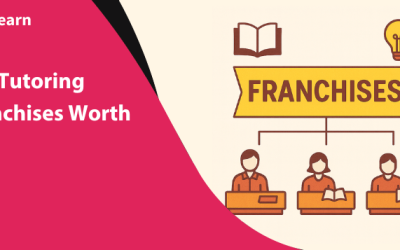How to Build an Online Course Platform: An Ultimate Entrepreneur’s Guide
Building your own course platform is indeed a great leap in your entrepreneurial journey! With the shifting market and technology needs, upgrading knowledge and skills is non-negotiable.
And course platforms like Udemy and Coursera have evolved to fill this industry gap! If you have significant expertise or experience in a niche, this is the time to revolutionise the industry. In this guide, we show you how to build an online course platform the right way.
So, are you ready to scale your million-dollar course empire? 🤑
Why Build an Online Course Platform?
Benefits of building an online course platform include:
-
Increasing Market Demand
With evolving technology, there is a growing demand for courses in AI, Data Science, and cybersecurity. Finance and business are other niches where digital courses are in demand. Hence, more professionals are looking for upskilling & reskilling opportunities.
-
Global Reach & Community Building
Online course platforms connect creators with potential audiences, expanding your reach. Some course platforms have collaborative spaces like discussion forums, peer-to-peer groups, or group chats. This fosters a motivated community of learners who can initiate discussions and share their knowledge.
-
Affordability & Accessibility
Course platforms eliminate the costs associated with setting up a physical infrastructure. Also, online platforms are available 24/7 for learners, offering convenience & accessibility.
-
Generates Revenue
Course platforms easily monetize from certificates, personalised learning paths, subscriptions, corporate training solutions, etc.
-
Builds Domain Authority
Popular course platforms like Udemy and Coursera have built a strong brand in the course creation & delivery space.
How to Build an Online Course Platform: Easy 8-Step Guide
Here’s an easy 8-step guide to building an online course platform:
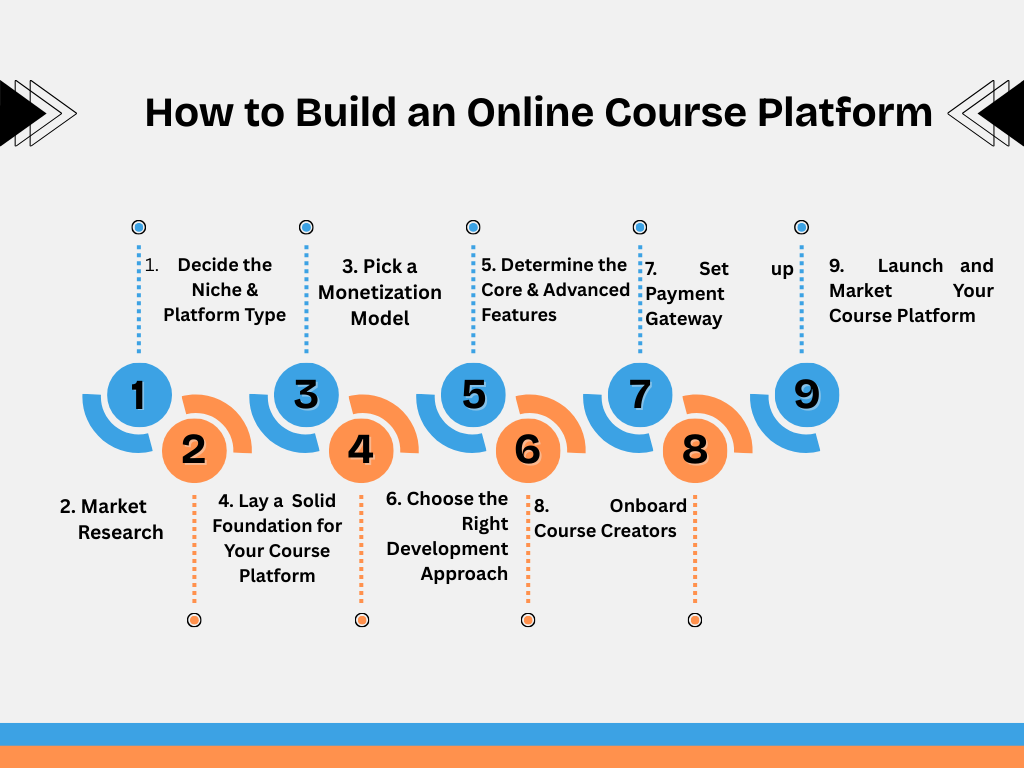
Step 1: Decide the Niche & Platform Type
First and foremost, work on a clear vision & long-term learning objectives for your course platform. Most importantly, your course platform must have a unique business proposition. This could be like tapping into a new niche, specific target audience, or problem-solution scenario.
Below are the different types of course platforms:
-
Marketplace
Course marketplaces are like a central hub or the Amazon of courses. Here, multiple instructors curate courses for different topics & sell them on the platform. Think about Udemy, Coursera, or Skillshare, they host thousands of courses for different skills & topics. Global reach and built-in audience are the advantages of such marketplaces. Limited control and lower commissions are their downsides.
-
All-in-one Course Platforms
Comprehensive course platforms, such as Kajabi, Thinkific, and Teachable, provide a solid foundation for course creators. This helps creators to design, host, market, and sell their courses as they grow their creator business. In-built marketing & sales, full control over branding & pricing are the pros.
Examples: Kajabi, Thinkific, Teachable
-
Niche Learning Site
Niche learning sites typically specialise in a particular skill or subject. So, if you’re passionate about a specific skill or arena, you can step into this exciting venture! Niching down needs a solid understanding of your target audience.
Examples: Masterclass, Pluralsight, Outschool
-
LMS
LMS course platforms are designed for educational purposes, organizations, or corporate solutions. These platforms help to create courses and track learners’ progress. It provides a centralized place for content management and streamlines content delivery.
Examples: Moodle, Blackboard, TalentLMS
-
MOOC
MOOCs are like open universities that provide learners with free and unlimited access. They are typically designed to reach a global audience and resemble a traditional university structure.
Example: Coursera, FutureLearn, edX,
-
Corporate Training Platforms
In today’s corporate world, every business is gearing towards enhancing employee skills and knowledge for company growth. Corporate training platforms offer courses with customized learning paths and microlearning modules.
Examples: Udemy Business, LinkedIn Learning, Udacity
Step 2: Market Research
While your platform might have gotten off the ground, you can’t skip market validation. It ensures your course has enough market for a profitable pursuit!
Analyze industry overview, target audience, competition, and evolving industry trends.
Key research questions to ask:
- Which are the underserved course segments in the market?
- What are the ideal course types for your niche audience?
- Who is the target audience for my courses (e.g., students, B2B organisations, creators)?
- What price point is right for your target audience?
- What are the platform features, course niches, and offerings in competitor platforms?
Steps for Market Research:
-
Identify Target Audience
Understanding your target audience is crucial for creating a course platform that caters to the learner’s needs & pain points. Create a buyer’s persona with key points like demographics, interests, age, location, etc. Leverage tools like surveys, polls, Google Analytics, and social media analytics (Facebook Audience Insights).
-
Competitor Analysis
Pick 2-3 top course platforms in your niche. Research their pricing, course niches, reviews, revenue streams, etc. Evaluate the gaps in content creation & delivery, features, and possible improvements. Utilize keyword research tools such as Semrush, Answer the Public, and Google Keyword Planner to conduct competitor analysis and identify potential keywords.
-
Validate Course Demand
Here, you need to look for a mix of audience validation & market signals. Employ tools like Google Trends, keyword research tools, Udemy & YouTube search. For more qualitative feedback, surveys, polls, and communities could work!

-
Evaluate the Trends and Opportunities
Keep an eye on the ongoing trends & demand shifts in the market. For example, recently there’s been a growing demand for AI & machine learning courses.
Step 3: Pick a Monetization Model
You are done with the initial research and everything is falling into place. Now, it’s time to think about the financial aspect. The right monetization model ensures a consistent revenue flow into your platform.
Consider the target audience, long-term revenue goals, and content value to choose the right revenue streams.
Key Monetization Models:
- One-time purchase
The simplest monetisation model where learners pay a fixed fee for lifetime access. Simple, easy conversions and upsells are the advantages of one-time purchases.
- Subscription
The subscription model offers unlimited access to courses for a recurring fee. This pricing model provides stability, but demands ongoing value.
E.g., Coursera Plus, Skillshare
- Freemium
Offer the basic course for free, and think about upselling with personalized learning paths, certificates, limited content access, etc. The freemium pricing model is a low-entry barrier for selling courses.
E.g., Coursera, Skillshare
- B2B Licensing
These platforms offer professional training and certification, upskilling programs, and cohort-based learning.
E.g., Udemy Business, Coursera for Business
Step 4: Lay a Solid Foundation for Your Course Platform
Before we move on to the intricacies and complexities of building your course platform, let’s plan a rock-solid foundation!
-
Choosing Your Domain
First and foremost, domain is the identity of your course platform. It is something people recognise your platform with, so choose wisely.
A well-chosen domain is short, easy to remember, accessible, and credible. Go with the right TLDs like .com, .org, .io, or .academy. GoDaddy, NameCheap, and Squarespace are reliable domain providers.
-
Design UI/UX
Prioritize designing a user-centric course platform with an easy learning curve. Aim for an intuitive, clean navigation and beginner-friendly interface. Visualise your brand and choose colours, themes, logos, and fonts that align with your business identity.
Keep it modern, yet minimalistic for maximum engagement. Optimize for clear CTAs, mobile responsiveness, and fast loading. Features like gamification, drag-and-drop, progress tracking, and course discovery filters make learning seamless.
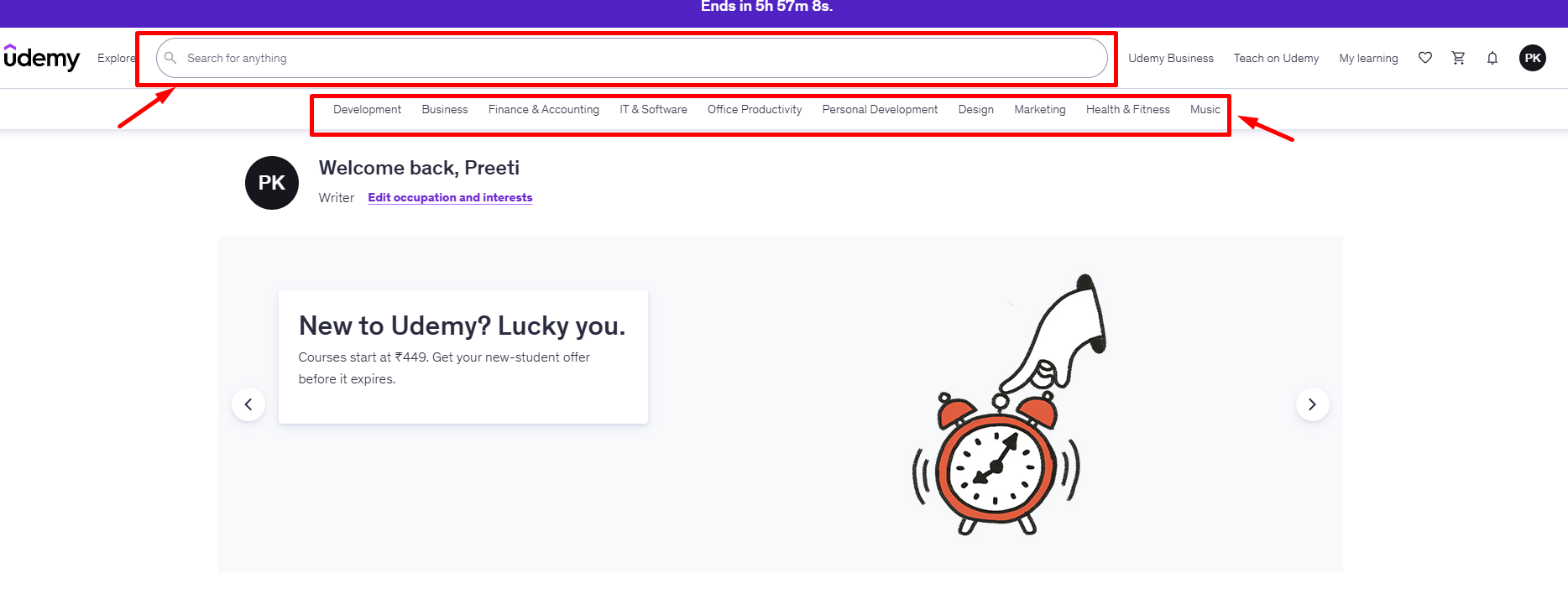
-
Content Foundation
Content is the cornerstone of your course platform. To make sure your platform curates the best content, plan a robust content strategy and framework. Define clear subjects(e.g., tech, finance, business), course categories, & structure.
Establish guidelines for content review & approval process. Also, include personalized learning paths to carve distinct beginner to expert journeys!
💡Planning for maximum engagement? Well, consider embracing micro-learning, interactive elements, and modular design (Course topic -> module -> lessons -> quizzes/assessments) to keep learners engaged.
Step 5: Determine the Core & Advanced Features
Your platform’s features and workflows are the essential building blocks. It determines the success of your course platform and plays a crucial role in the platform experience!
The basic purpose of a course platform is to create, market, and deliver courses. On the other hand, learners can access, engage with creators, and track their progress.
Here’s a list of key features for learners, admins, and instructors you can’t miss out:
Learners Features
- Easy Sign-Up
A smooth and seamless sign-up process is one of the first impressions for an online learning platform! Create a simple user registration process with minimal fields and social login for a convenient login experience.
- User-Friendly Interface
Design simple, intuitive navigation and interactive learning paths to create a seamless UX experience.
- Course Discovery & Filtering
Whether you are hosting ten or thousands of courses, a quick and easy search tool makes your search easier. Add comprehensive search filters like price, course topic, category, duration, skill level, etc.
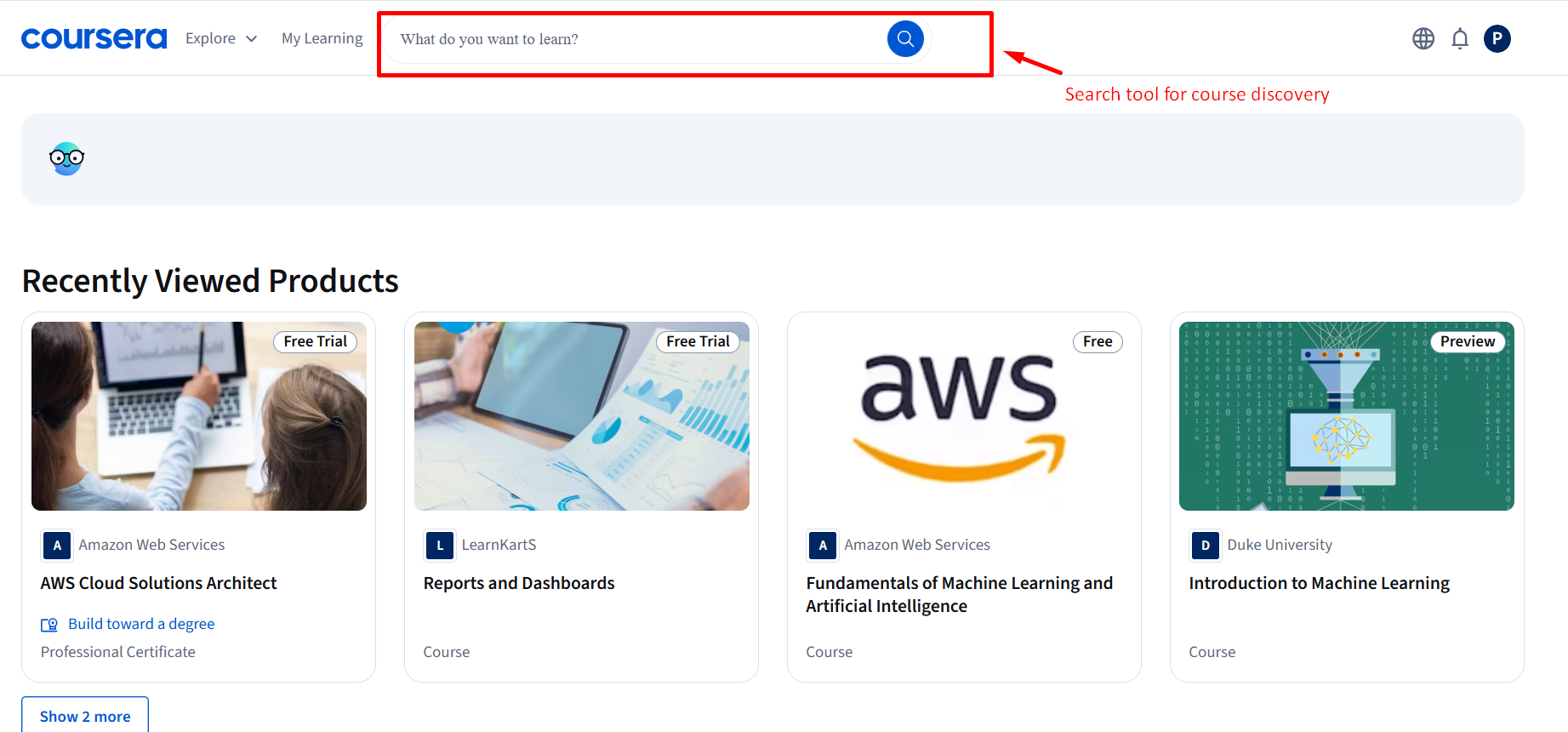
- Course Enrollment
The course enrollment process shouldn’t be confusing. Provide self-audit options where learners can preview the course before actually starting it. Additionally, consider adding bulk enrollment or self-enrollment options to accommodate learner convenience.
- Secure Payment Workflows
Whether your platform supports one-time purchases, subscriptions, or upsells, a flexible payment is essential. Ensure your checkout, authentication workflows, and final payment are in sync. Most importantly, make sure your platform provides multiple payment methods and supports regional payment methods like Bix, Alipay, and UPI.
- Course Recommendations
Whether it’s Udemy, Coursera, or Udacity, the most popular course platforms all feature an insightful course recommendation section. It recommends the right courses as per user behavior, interests, and purchase or scrolling history.
- Ratings & Reviews
When learners find a particular course valuable, adding ratings and comments adds credibility for the course. This also guides similar learners to take up the course!
- Engagement Features
Add quizzes, assessments, or polls to boost engagement, retention, and comprehension among learners.
- Community-Building
Encourage collaborative learning, peer-to-peer reviews, chat rooms, breakout rooms, live webinars and Q&A to build a powerful learning community.
- Mobile-Friendly
Integrate bite-sized modules, offline access, and multimedia learning for a more responsive experience on small screens.
Instructor Features
- Profile Management
Course creators can maintain a customized profile to get noticed by learners. Allow them to manage & edit their credentials & course information. Provide features for author bio, qualifications, portfolio, social media link, profile picture, and testimonials.
- Easy Course Builder & Content Dripping
Now, for a marketplace-style platform, focus on a user-friendly curriculum builder that supports text, audio, videos, quizzes, etc. On the other hand, an all-in-one course platform like Kajabi offers an easy and intuitive builder with drag-and-drop functionality and engagement features. Drip modules are where content is released over time for these platforms.
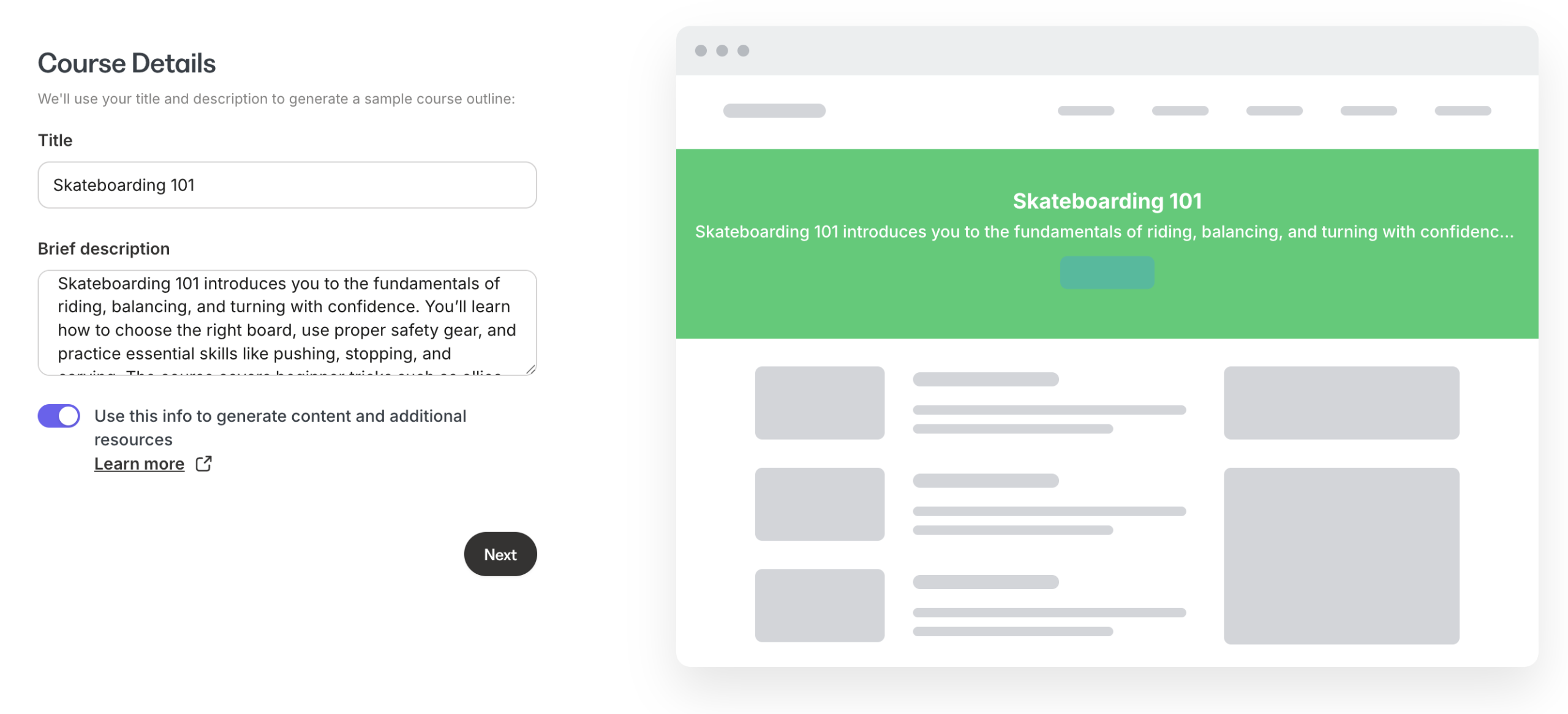
- Student Engagement Tools
Include quizzes, assessments, and assignments within or after learning modules to make courses more engaging.
- Automated Certificates
Popular course platforms like Udemy, Coursera, and Kajabi provide certificates on course completion(paid courses). This increases the credibility and value of courses.
- Analytics & Progress Tracking
Creators can track learner engagement by course completion, quiz scores, course sales, and drop-off points. For example, Kajabi is known for its powerful business analytics to track revenue, sales, and subscriptions. The comprehensive reports on diverse metrics help creators to optimize their course content or prices.
- Upselling and Cross-selling Options
Allow creators to maximize their course sales with upselling and cross-selling opportunities. They can suggest a premium version of the course, or add complementary courses or related-course bundles.
- Marketing & Branding
Building a compelling brand helps creators stand out amongst the sea of creators. Offer an in-built website or landing page builder, email campaigns, or marketing funnels to create and sell courses seamlessly.
- Customized Templates
Pre-built templates or themes speed up course creation and give the courses a professional look. Prepare templates for different course niches and types.
Admin Features
- Learner Management
Enable admins to seamlessly track learner information, manage their roles & permissions, course enrollments, etc.
- Instructor Management
Even course creators are platform users, and managing them is crucial. Ensure admin can manage their profiles & roles, track their performance, or issue timely payouts.
- Content Management & Approval
The success of a course platform depends on its course quality. Platform admins review the course content & perform adequate quality checks to ensure the best content goes out!
- Revenue Management & Analytics
From the platform revenue and course sales to commissions, you can’t skip on tracking your platform performance. Include reports on revenue, course performance, engagement, and a custom dashboard to track different metrics.
- Platforms Settings & Third-party Integrations
Integrating your course platform with email marketing tools, payment gateways, CRMs, or LMS helps to create seamless workflows.
- Security
Safeguarding the security of platform users and content is essential. Make sure the course platform enables you to manage permissions & access for learners, instructors, and admins. Include data encryption, authentication and features like watermarking for security.
Optional Features:
- AI-assistance for course creation & marketing
- Progress gamification
- Multi-course learning paths
- Discussion boards
- Coupon & discounts
- Multi-language & currency Options
- Membership/ Subscriptions/ Embedded Community
- Live sessions
Step 6: Choose the Right Development Approach
Let’s consider a simple analogy. Your house needs a strong foundation to stand the test of time! Similarly, if you wish your course platform to succeed, the key is to choose the right development solution.
Here are some options to build an online course platform:
Development Approaches Features
| Development Approaches | Features |
| Ready-made clone scripts like Pinlearn | 100% customizable platform script to launch your platform in days. Market-ready solution with easy course creation & delivery, advanced analytics & dashboards, third-party integrations, etc. Shorter development cycles, no coding hassles, and one-time cost with life-time access |
| Website Builder + LMS Plugin (Plugins like LearnDash, LifterLMS, TutorLMS) | Easily build a branded course platform with the right plugins and integrations. Feature-rich, scalable, and integrated payments. Highly customized platforms need more setup and plugin(downside). |
| Open-source LMS (e.g., Moodle, Open edX) | Best for large-scale universities, organizations, or schools with massive user base & content. Pros include proven industry expertise and in-built e-learning features. The final platform might lack modern look and feel and needs technical expertise for development. |
| Custom Development (Building from scratch) | Caters to unique learning and business needs with advanced workflows. Demands high-budget, long development cycle, and dedicated tech team. |
Step 7: Set up Payment Gateway
Your course platform isn’t complete without a secure and convenient payment gateway. Choose a trusted payment gateway that streamlines your course sales and maximizes revenue.
Stripe and PayPal are excellent choices that support all major payment methods. However, consider your target audience and monetization model when choosing the right one. For example, if your platform includes subscriptions or memberships, look for a gateway with recurring billing.
Key Payment Gateways:
- Stripe – A widely-recognized payment gateway, Stripe is excellent for managing courses, subscriptions and memberships. It supports multiple payment methods like major cards, wallets, and local options. Multi-currency support, free trials, and Stripe Connect (for marketplace) make it worth considering.
- PayPal – Another trusted choice is PayPal, which supports methods such as PayPal balance, cards, Venmo, and cryptocurrency. Advanced analytics. Its features include one-time payments, subscriptions, fraud prevention tools and checkout options.
- Authorize.net – It offers a comprehensive suite of features, such as diverse payment methods, recurring billing, global reach and an advanced dashboard.
- Local Payment Gateways – Beyond the global payment options, local payment gateway support for a specific target audience or regions. PayU, PayStack (Africa), and FPX (Malaysia) are some examples of regional payment gateways.
For every payment gateway, you need a merchant account and API credentials to integrate with your course platform.
Step 8: Onboard Course Creators
Whether you’re building a course marketplace or saas course platform, course creators are the main sail anchoring you to success!
Hence, hire the top talent & niche experts to build authority. To make this happen, top platforms like Udemy have set clear eligibility guidelines.
Highlight the qualification or experience you’re looking for. Follow a fair and transparent selection process for marketplace-style platforms.
Attract the best talent with fixed pay, equitable revenue sharing and best course creation tools. But, if you’re building all-in-one platforms like Kajabi, you don’t need an active hiring process.
Support their ongoing learning & skill upgradation with certifications, training hubs or university, workshops, and resources.
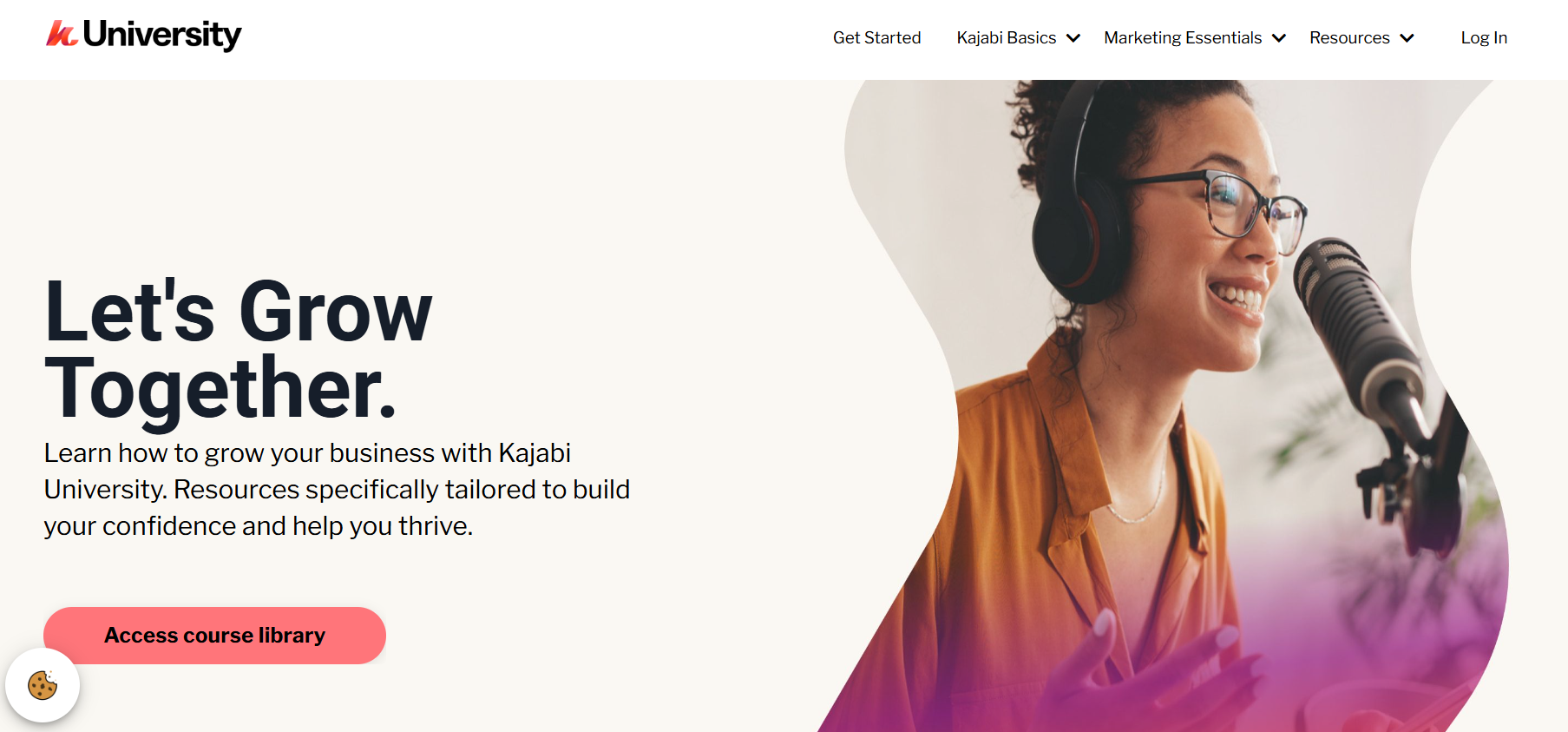
Kajabi University is a resource hub for growing creators, entrepreneurs, and businesses.
Step 9: Launch and Market Your Course Platform
Once you have built your course platform and onboarded instructors, it’s time to put your course platform to the test! The demand for course platforms is high, and you need definite market prowess to gain a competitive edge!
Identify and research your target audience to find the right marketing strategies for your course platform.
Key Promotional Strategies for Course Platforms:
- Content Marketing – Think about sharing expert tips, insights, & success stories with your target audience. Kajabi and Thinkific have created great resources for entrepreneurs to grow their business.
- Free Resources – Provide free resources like mini courses, blog posts, how-to guides, and videos to give a teaser of the kind of content your course platform provides.
- SEO – Understand what your audience is searching for and find the relevant keywords. Optimize your course titles, landing pages, on-page SEO, and URLs with those keywords.
- Social Media & Community Building – Choose a social media platform from X, Instagram, Facebook, Pinterest, where your audience typically prefers. Engage your audience with video clips, reels, stories, Q&A sessions, polls, and quizzes.
- Social Proof – Share testimonials, reviews, and case studies from learners about their platform experience.
- Paid Ads – Run targeted Google search ads or on Facebook ads, YouTube ads, or LinkedIn ads based on your target audience.
- Partnerships & Collaborations – Partner with popular educators, bloggers, influencers, and niche experts to broaden your reach. For example, if you’re building an MOOC, collaborate with top organizations to offer professional certifications like master track programs.
Conclusion
Well, that was our 9-step comprehensive guide on how to build an online course platform. If you are stepping into the e-learning industry for the first time, things might seem overwhelming. But the key is to set your foundation right. Don’t compromise on a profitable niche, a unique business proposition, a robust business model, and the right development platform.
Have an idea to scale your course business? Start earning from your course platform in weeks — book a 15-minute free call with our team!
FAQ-Related to How to Build an Online Course Platform
1. How to build an online course platform?
These are the key steps to building a course platform:
- Decide the niche & platform type
- Research market & audience
- Pick a monetization model
- Set up your course platform
- Determine the core & advanced features
- Choose the right platform
- Set up a payment gateway
- Onboard course creators
- Launch & market your course platform
2. How much does it cost to create a course platform?
The cost of building a course platform ranges from $50,000 to $70,000, depending on several factors. Platform complexity, tech stack, hourly development cost, and location are some factors that influence overall cost.
3. How long does it take to build a course platform?
The time to build and launch your course platform depends on your development approach, feature complexity, and customization. While custom development extends the timeline to months or even years, ready-made clone scripts significantly shorten the time.





